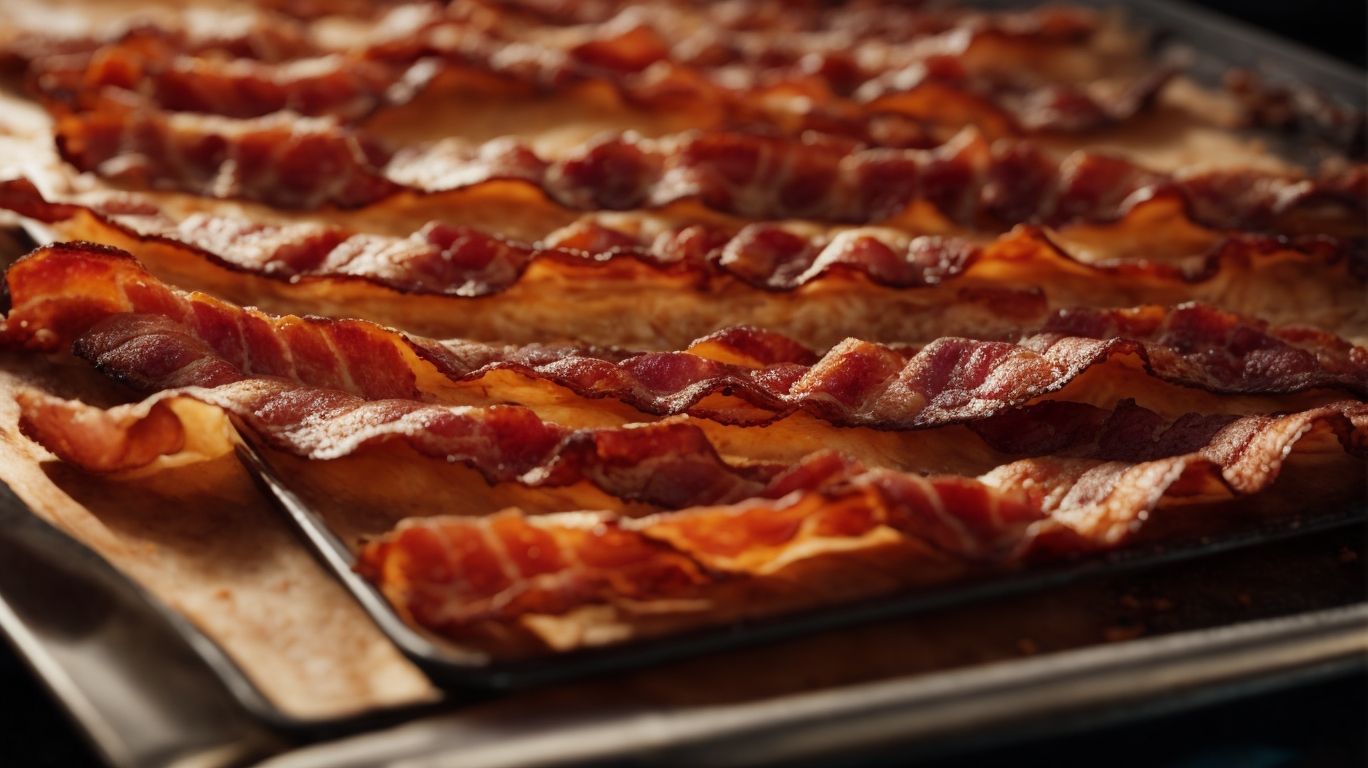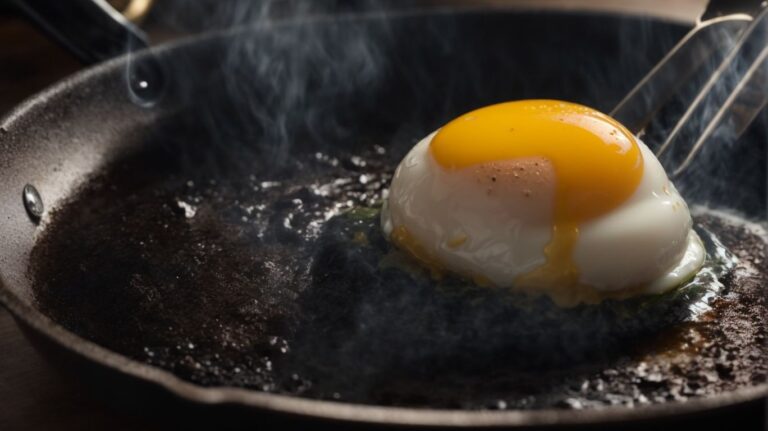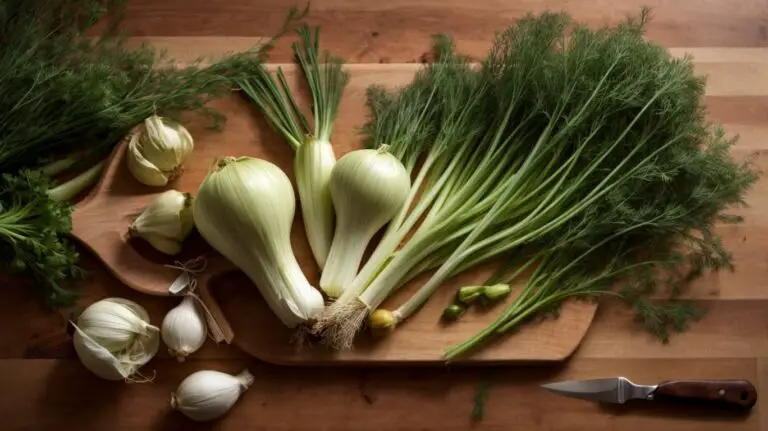How to Cook Bacon in the Oven?
Craving perfectly cooked bacon without the mess and hassle of stovetop splatters? Look no further than your oven!
We’ll explore the benefits of cooking bacon in the oven, what you’ll need for the process, and the simple steps to achieve crispy, flavorful bacon every time.
From preheating the oven to saving the bacon grease for future use, we’ll cover all the tips and tricks for perfectly cooked bacon.
Get ready to elevate your bacon game with this foolproof method!
Key Takeaways:
Why Cook Bacon in the Oven?
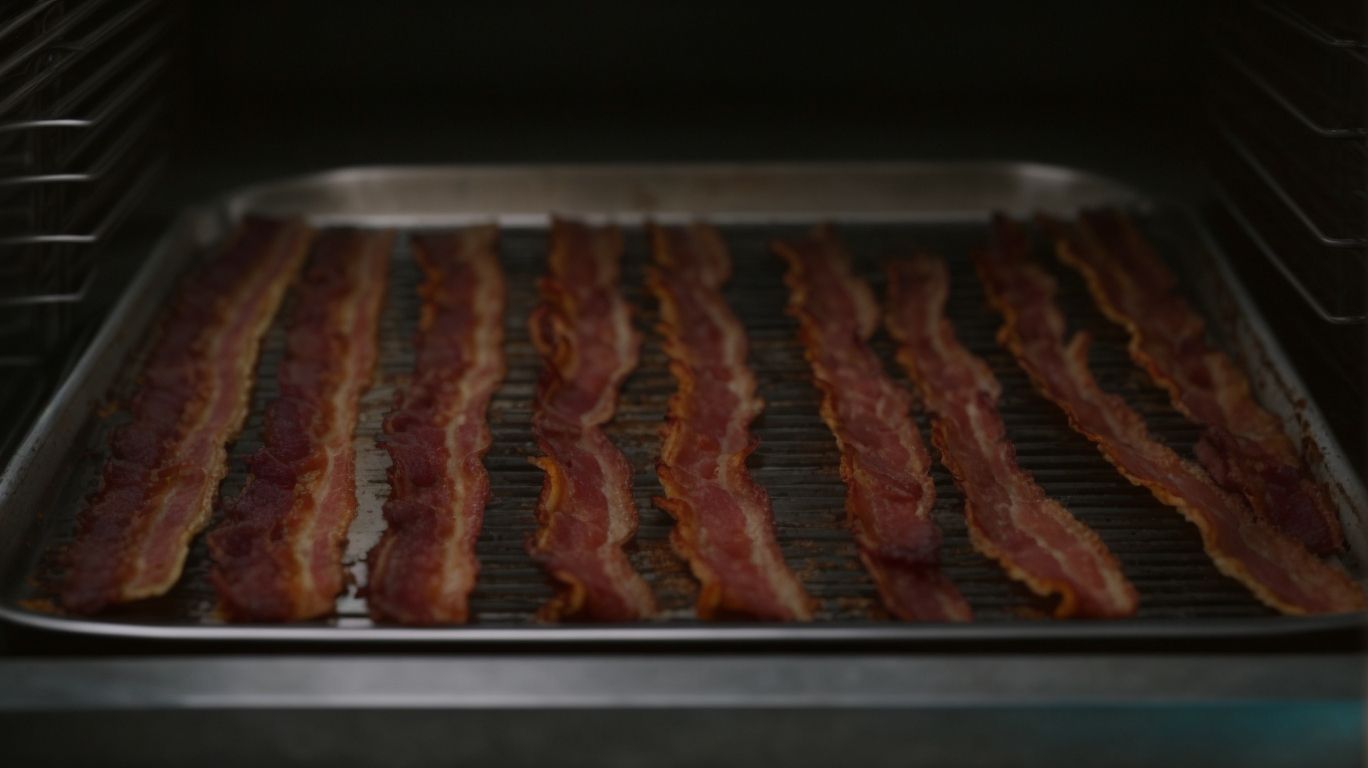
Credits: Poormet.Com – Alexander Rodriguez
Cooking bacon in the oven offers numerous benefits, including achieving even cooking, minimizing mess, and enhancing the flavor of the bacon slices.
When you cook bacon in the oven, you ensure that each slice receives uniform heat distribution, leading to perfectly cooked pieces without any undercooked or burnt spots. This method not only saves you the hassle of flipping each slice individually but also guarantees that all slices are ready at the same time.
The oven’s enclosed environment helps contain splatters, resulting in a cleaner cooking process with minimal grease splattering on your stovetop. This translates to less post-cooking cleanup, as there are no greasy pots or pans to scrub.
The slow and steady cooking process in the oven allows the bacon strips to render their fat more gradually, leading to a crispier texture and a more concentrated, delicious flavor. The gently caramelized edges and the overall richness achieved when baking bacon add an extra dimension to your dish that frying simply can’t match.
Even Cooking
One of the primary reasons to cook bacon in the oven is to achieve perfectly even cooking results throughout all slices.
When preparing bacon in the oven, you can ensure that each slice is cooked to the same level of crispiness, eliminating the frustration of some being undercooked while others are overdone. This method also allows the bacon to cook in its own rendered fat, resulting in a more consistent texture and flavor profile. By arranging the bacon slices on a baking sheet in a single layer, you create optimal airflow around each piece, promoting uniform cooking. The controlled heat distribution in the oven further enhances this process, leading to deliciously crispy and evenly cooked bacon every time.
Less Mess
Cooking bacon in the oven also significantly reduces the mess typically associated with stove-top methods.
When you bake bacon in the oven, the grease splatters are minimal compared to frying it in a pan. This means you don’t have to worry about cleaning up greasy stovetops and surrounding surfaces.
Cooking bacon in the oven allows the fat to drip away from the bacon slices, resulting in a crispier and less greasy outcome. This method not only saves time on cleanup but also helps in achieving perfectly cooked bacon while minimizing the grease mess in your kitchen.
More Flavor
The oven method of cooking bacon enhances the flavor profile by allowing the bacon to cook evenly and render out excess grease.
When you bake bacon in the oven, the gentle heat surrounds each slice, resulting in a perfectly crisp texture without any burnt edges. This method also helps in achieving that desirable balance between crispy and tender.
Rendering the excess grease not only makes the bacon less greasy but also intensifies its natural flavors. The bacon fat that accumulates during baking can be later used for cooking, infusing your dishes with a rich, smoky essence.
What You’ll Need
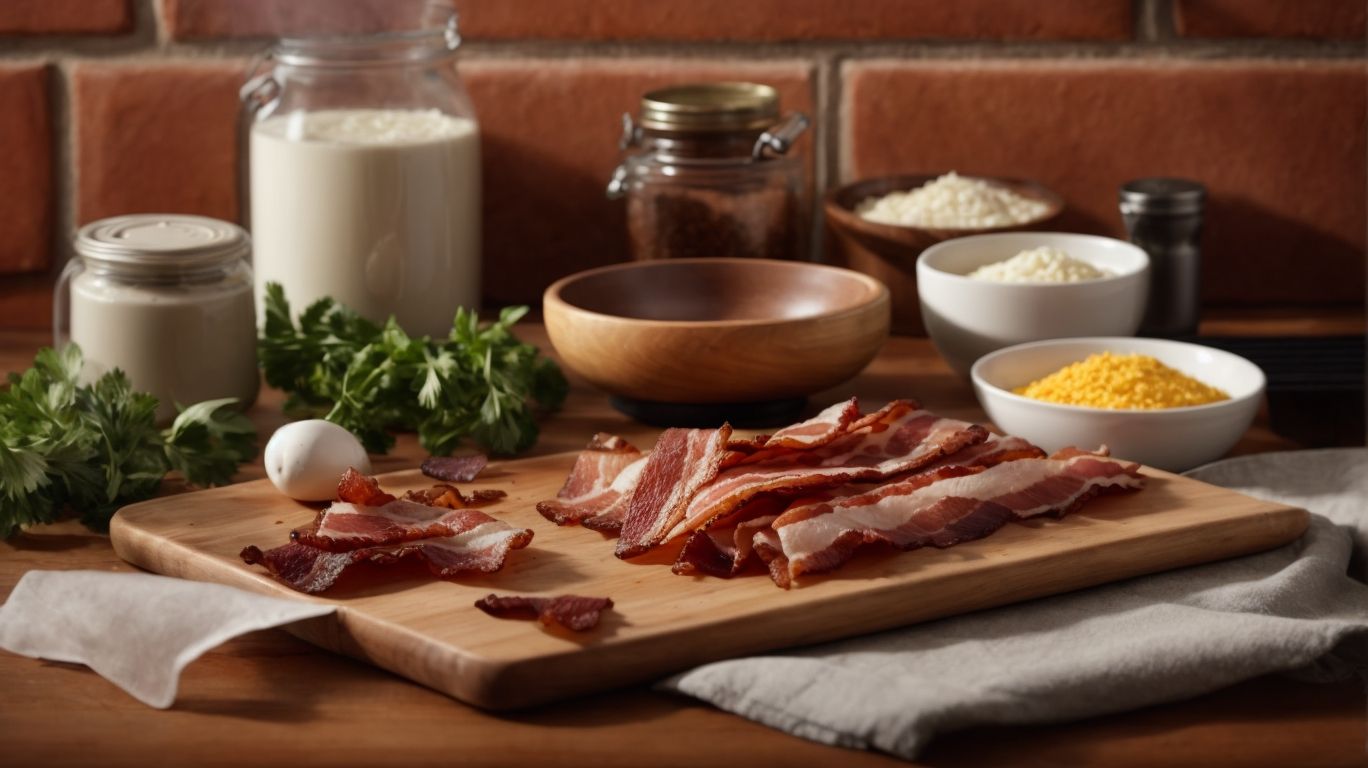
Credits: Poormet.Com – Dylan Johnson
To cook bacon in the oven effectively, you will need a baking sheet, aluminum foil, a cooling rack, and the desired number of bacon slices.
Using a baking sheet allows the bacon to cook evenly while ensuring any grease is collected, making cleanup a breeze. Aluminum foil is essential as it helps to prevent any dripping or spattering onto the oven, maintaining a cleaner cooking environment.
A cooling rack is used to elevate the bacon slices, allowing hot air to circulate around them, resulting in crispy, evenly cooked bacon strips that are not soggy on the bottom.
- Each component plays a crucial role in achieving perfect oven-cooked bacon – the baking sheet for an even cooking surface, aluminum foil for easy cleanup, a cooling rack for crispy texture, and the bacon slices for the star ingredient.
Baking Sheet
A baking sheet serves as the foundation for cooking bacon in the oven, providing a flat surface for even heat distribution.
When oven-cooking bacon, the baking sheet acts as a crucial element in ensuring that the bacon cooks uniformly. By placing the bacon strips on the baking sheet, it allows the hot air in the oven to circulate around the bacon, resulting in crisp and evenly cooked strips. This method also minimizes the chances of the bacon sticking to the sheet, thanks to its non-stick surface and ability to handle the high temperatures associated with oven-based cooking.
Aluminum Foil
Using aluminum foil to line the baking sheet helps in easy cleanup and prevents the bacon grease from sticking to the pan.
The foil acts as a barrier between the bacon and the baking surface, which helps in reducing the chances of overcooking or burning the bacon due to direct contact with the hot pan. When bacon cooks in its grease, the fat drips down onto the foil, making it simple to dispose of once the cooking is done, without dealing with a greasy mess in the pan.
By trapping the excess grease in the foil, it also minimizes the splattering during the cooking process, reducing the risk of oil burns in the oven. This method not only streamlines the cleaning process afterward but also promotes a more even cooking of the bacon strips, resulting in crispy, delicious slices every time.
Cooling Rack
Placing a cooling rack on the foil-lined baking sheet elevates the bacon slices, allowing heat to surround them for even cooking.
This method is particularly important as it prevents the bacon from sitting in its own grease, ensuring a crispier texture. The elevated design of the cooling rack promotes air circulation all around the bacon, helping it cook uniformly and reducing the chances of it becoming soggy. By using a cooling rack, the excess fat drips down onto the baking sheet below, resulting in less greasy bacon and a healthier final product. This simple yet effective technique is crucial for achieving that perfect balance of tenderness and crispiness in oven-cooked bacon.
Bacon Slices
The star of the show, bacon slices are arranged on the cooling rack to undergo the transformation into crispy delights during oven cooking.
When selecting bacon for oven cooking, it is crucial to opt for high-quality slices that have a good balance of fat and lean meat, as this will contribute to the final texture. The fat content in the bacon plays a key role in achieving that perfect crispiness while cooking. The thickness of the slices also influences how they crisp up in the oven. Thicker slices may require longer cooking times to reach that desired level of crispness.
Steps to Cook Bacon in the Oven
Mastering the art of cooking bacon in the oven involves several steps, from preheating the oven to baking the bacon slices until they reach the desired level of crispiness.
To start, preheat your oven to 400°F (200°C) for optimal results. While the oven is warming up, prepare a baking sheet with a cooling rack on top; this will allow the bacon to cook evenly as any excess grease drips down. Next, carefully lay out the bacon slices on the rack, making sure they do not overlap to ensure they cook uniformly.
Once the oven reaches the desired temperature, place the baking sheet in the center of the oven and let the bacon cook for around 15-20 minutes. Keep a close eye on it towards the end to prevent it from becoming too crispy.
After the bacon slices are cooked to your liking, carefully remove the baking sheet from the oven. Using tongs, transfer the bacon to a paper towel-lined plate or tray to drain off any excess grease. Allow the bacon to cool for a few minutes before serving, and enjoy your perfectly cooked oven-baked bacon!
Preheat the Oven
The first step in cooking bacon in the oven is to preheat the oven to the recommended temperature for optimal results.
Preheating the oven before cooking bacon is crucial as it helps in achieving the perfect balance between crispy and juicy bacon strips. The ideal temperature setting for cooking bacon typically ranges between 375°F to 400°F. By preheating the oven at this specific range, you ensure that the bacon cooks evenly without burning or becoming overly crispy.
When the oven reaches this temperature, it allows the bacon to slowly render its fat while retaining its natural flavors and textures. Avoid starting the cooking process until the oven reaches the desired temperature to guarantee consistent results with every batch of bacon.
Line Baking Sheet with Foil
Next, line the baking sheet with aluminum foil to facilitate easy cleanup and prevent the bacon grease from sticking.
By using aluminum foil to line the baking sheet, you create a protective barrier that absorbs the excess grease while ensuring your bacon cooks evenly. When the cooking is done, you can simply discard the foil with all the drippings, saving you from scrubbing stubborn, baked-on grease off the pan. This technique not only simplifies cleaning but also helps maintain the pristine condition of your baking sheet, extending its lifespan.
By containing the grease within the foil, you prevent it from seeping into the baking sheet, eliminating the risk of future burning or smoke when using the oven again. This method not only enhances the flavor of your oven-cooked bacon but also prevents any potential mess or lingering smells in your kitchen.
Place Cooling Rack on Foil
After lining the baking sheet with foil, position the cooling rack on top to elevate the bacon slices for optimal heat circulation.
By elevating the bacon slices on the cooling rack, the hot air in the oven can circulate freely around each piece, ensuring that they cook evenly and become irresistibly crispy. This setup also allows the rendered fat to drip down onto the foil-lined baking sheet below, preventing the bacon from becoming soggy in its own juices.
The use of a cooling rack not only promotes crispiness but also helps in avoiding a greasy mess, resulting in cleaner, healthier bacon strips. The elevated position of the rack aids in proper heat distribution, allowing the bacon to cook to perfection without the need for constant flipping or turning during the baking process.
Arrange Bacon Slices on Rack
Carefully lay out the bacon slices on the cooling rack, ensuring they are placed evenly and have sufficient space for air circulation during baking.
Properly arranging the bacon slices on the cooling rack serves as a crucial step in achieving perfectly cooked, crispy bacon. Space out the slices to prevent them from sticking together, allowing the hot air to circulate around each piece evenly. This ensures that the bacon cooks uniformly, avoiding any chewy or undercooked spots. Maintaining consistent spacing between the slices helps in ensuring that each piece is cooked to the desired level of crispiness, resulting in a delicious and satisfying bacon experience.
Bake for 15-20 Minutes
Once the bacon slices are arranged, bake them in the preheated oven for 15-20 minutes or until they reach the desired level of crispiness.
To ensure that your bacon cooks evenly, you may want to flip the slices halfway through the baking process. This simple step can help achieve that perfect balance between crispy and chewy textures. Keeping an eye on the edges of the bacon is key; when they start to turn a golden brown color, it’s a good indication that the slices are almost ready. Remember, the bacon will continue to crisp up slightly after you take it out of the oven due to residual heat, so factor that into your cooking time.
Remove and Drain Bacon
Once the bacon reaches the desired level of crispiness, carefully remove it from the oven and place it on a paper towel-lined plate to drain excess grease.
Allow the bacon to rest for a few minutes on the paper towel to absorb any remaining grease. This step not only helps in achieving a perfect balance of texture but also enhances the overall flavor of the bacon.
Remember, the hot bacon can continue to cook slightly even after being removed from the oven, so a brief resting period helps in ensuring the ideal level of crispness without overcooking. Patting the bacon gently with additional paper towels on top can help further reduce the residual grease before serving.
Tips for Perfectly Cooked Bacon
Achieving perfectly cooked bacon in the oven requires attention to detail, such as using thick-cut slices, avoiding overcrowding, and saving the rendered bacon grease.
Regarding bacon thickness, opting for thick-cut slices ensures a juicy and flavorful outcome, as they tend to retain more moisture during the cooking process.
To ensure even cooking, space out the bacon strips on a cooling rack placed on a baking sheet, allowing hot air to circulate around each piece for that desired crispy texture.
Don’t discard the golden drippings left after baking; instead, preserve and refrigerate the rendered bacon grease for later use in enhancing the flavor of dishes like roasted vegetables, fried eggs, or even popcorn!
Use Thick Cut Bacon
Opt for thick-cut bacon slices when cooking in the oven to ensure a satisfying texture and juiciness in the final product.
Thick-cut bacon slices are crucial for oven cooking as they provide a substantial and meaty consistency that withstands the heat, resulting in a perfectly crispy exterior while maintaining a tender interior. The thickness of the bacon also allows for a slower rendering process, ensuring the fat renders evenly, infusing every bite with rich flavor.
Use a Cooling Rack
Employing a cooling rack during oven cooking helps the bacon slices achieve optimal crispiness by allowing air to circulate around them.
This essential tool is not just for cooling baked goods but plays a crucial role in the bacon-cooking process. By elevating the bacon slices on the rack, the fat drips away, preventing the bacon from becoming soggy and greasy, resulting in a deliciously crunchy texture. The elevated design of the rack ensures that the bacon cooks evenly on all sides, eliminating the need for constant flipping. The rack helps to minimize smoking and ensures that the bacon remains perfectly flat during the cooking process, ideal for achieving that coveted crispy finish.
Don’t Overcrowd the Bacon
Avoid overcrowding the bacon slices on the cooling rack to ensure that each piece has ample space for proper heat circulation and uniform cooking.
When bacon slices overlap during cooking, they trap steam and moisture, resulting in a chewy or soggy texture rather than the desired crispy finish. Proper spacing allows the heat to evenly distribute and crisp up each slice to perfection. Overcrowding can lead to inconsistent cooking, with some pieces remaining undercooked while others become overly crispy. By spacing out the bacon slices, you can achieve that ideal balance of crispy edges and tender, juicy meat that makes bacon a beloved breakfast staple.
Save the Bacon Grease
After cooking bacon in the oven, remember to save the rendered bacon grease in a glass jar for future culinary uses.
Not only does rendered bacon grease add a rich and smoky flavor to a variety of dishes, but it also helps reduce food waste and adds a unique touch to your cooking. Store the cooled bacon grease in the refrigerator to keep it fresh for longer periods. It can be used to fry eggs, potatoes, or even as a savory substitute for butter in certain recipes. The possibilities are endless, from enhancing the taste of vegetables to seasoning popcorn with a delectable bacon essence.
Conclusion
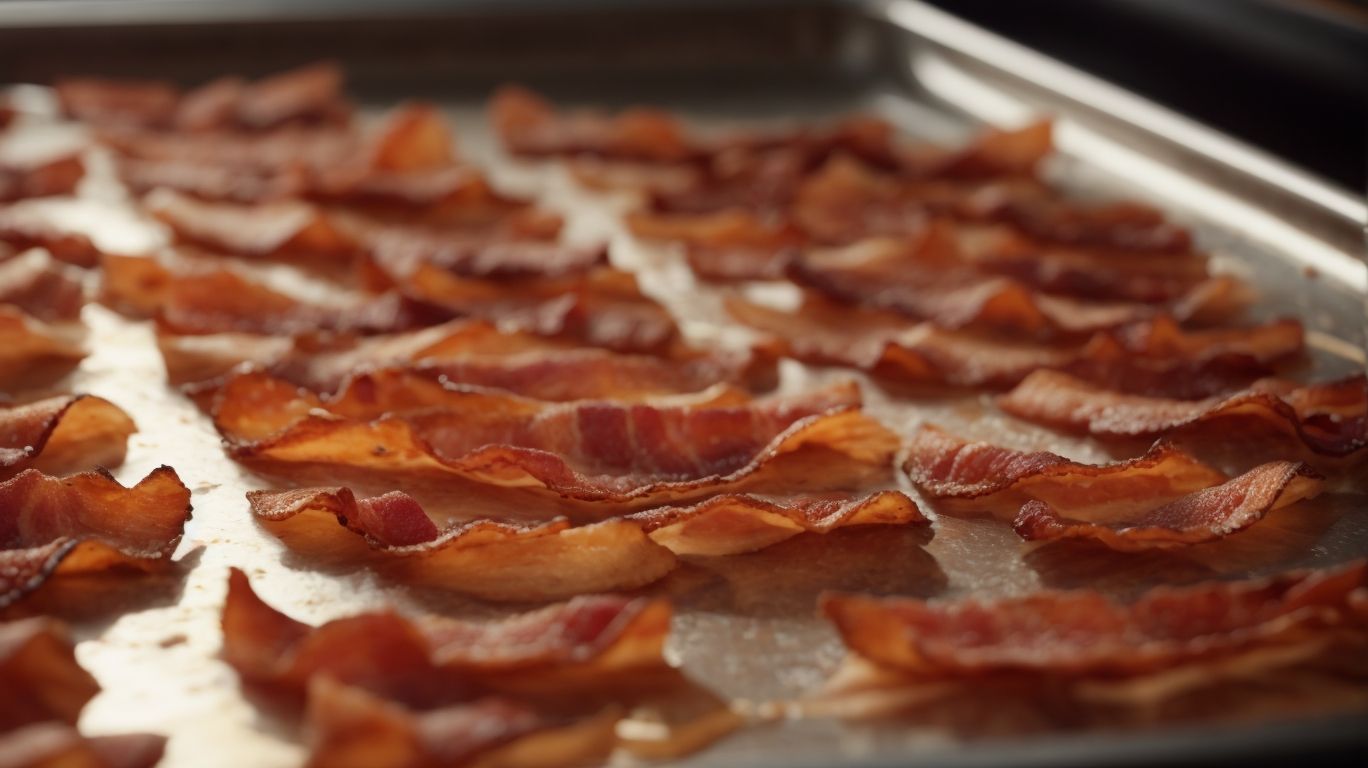
Credits: Poormet.Com – Carl Miller
Cooking bacon in the oven offers a convenient and flavorful approach to preparing this beloved breakfast staple.
Cooking bacon in the oven provides a hassle-free and hands-off method that ensures consistent results every time. The oven’s indirect heat helps reduce splattering and guarantees crispy, evenly cooked bacon without constant monitoring. This cooking technique allows for larger batch sizes, perfect for feeding a crowd or meal prepping.
Enhancing the flavor and texture of bacon, oven cooking promotes a slightly chewier texture with a perfectly crispy exterior. The bacon strips cook evenly without curling or uneven cooking, resulting in a mouthwatering outcome that enhances the overall taste experience.
Frequently Asked Questions
1. How to Cook Bacon in the Oven: What is the best temperature to cook bacon in the oven?
The best temperature to cook bacon in the oven is 400 degrees Fahrenheit. This allows the bacon to cook evenly and become crispy without burning.
2. How to Cook Bacon in the Oven: Do I need to preheat the oven before cooking bacon?
Yes, it is important to preheat the oven before cooking bacon. This ensures that the bacon cooks evenly and prevents it from becoming soggy.
3. How to Cook Bacon in the Oven: Can I use parchment paper or aluminum foil to line the baking sheet?
Yes, either parchment paper or aluminum foil can be used to line the baking sheet when cooking bacon in the oven. This makes cleanup easier and prevents the bacon from sticking to the pan.
4. How to Cook Bacon in the Oven: How long does it take to cook bacon in the oven?
It typically takes 15-20 minutes to cook bacon in the oven, depending on the thickness of the bacon and the desired level of crispiness. It is important to keep an eye on the bacon to prevent it from burning.
5. How to Cook Bacon in the Oven: Can I use a baking rack to cook bacon in the oven?
Yes, using a baking rack when cooking bacon in the oven can help to elevate the bacon and allow the excess grease to drip off, resulting in a crispier and less greasy bacon.
6. How to Cook Bacon in the Oven: What are some tips for making perfectly cooked bacon in the oven?
Some tips for making perfectly cooked bacon in the oven include spacing out the bacon strips on the baking sheet, flipping the bacon halfway through cooking, and patting the bacon with paper towels before serving to remove excess grease.

